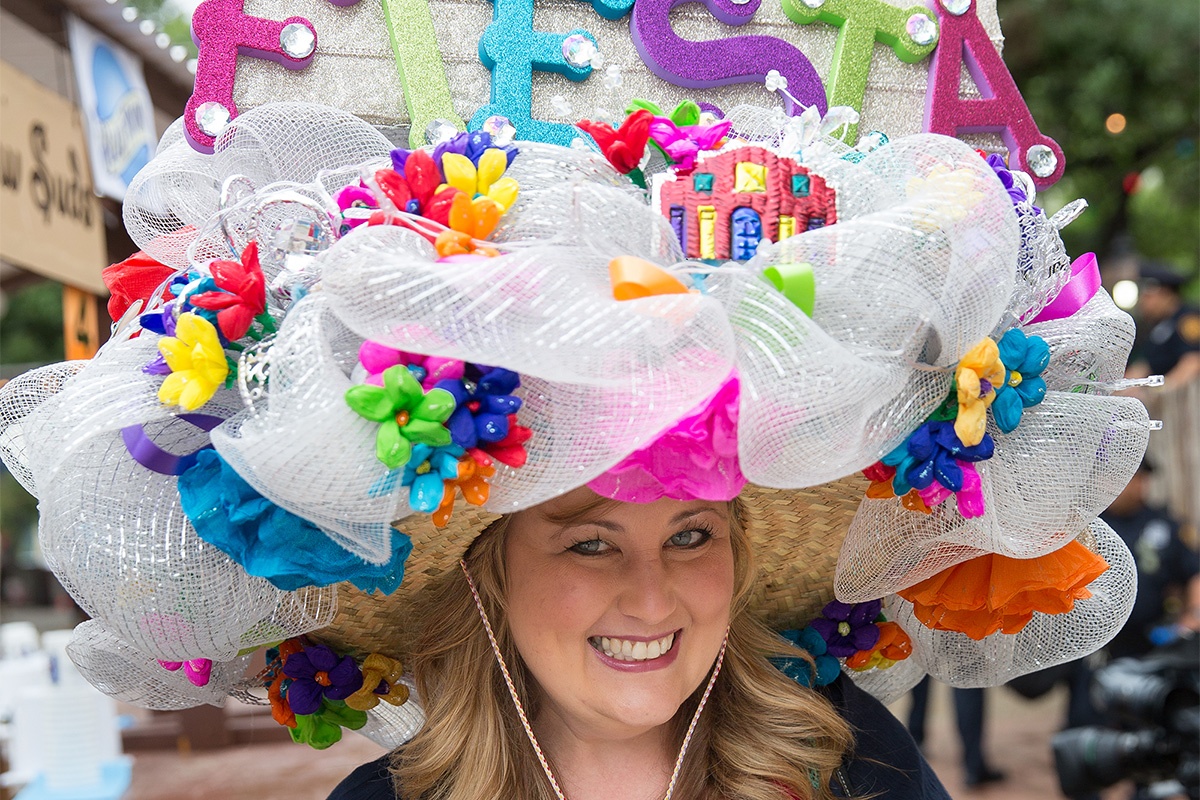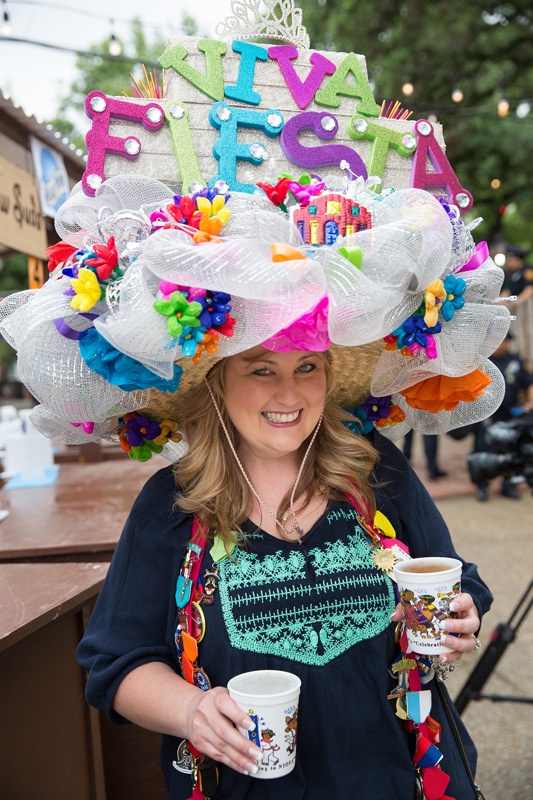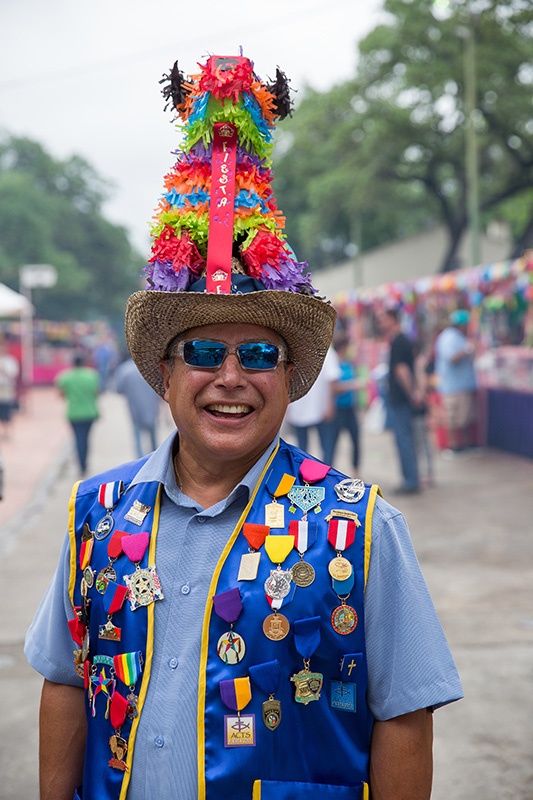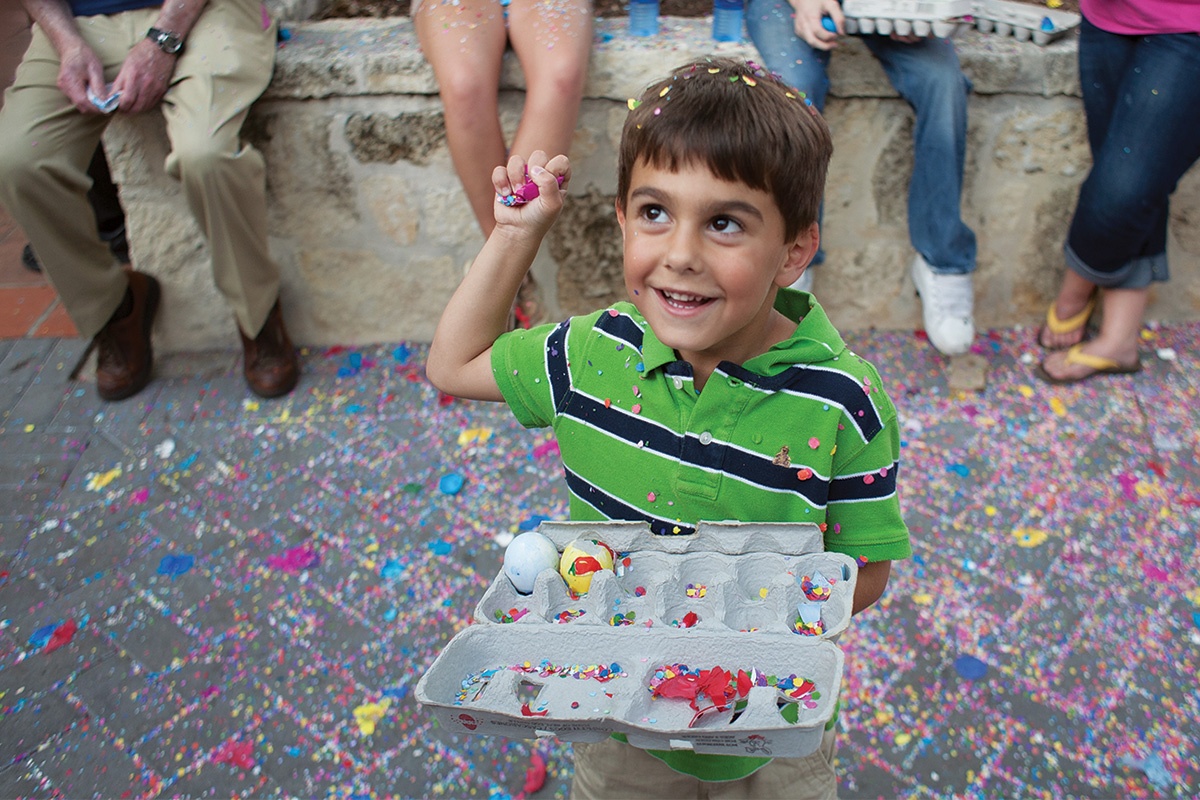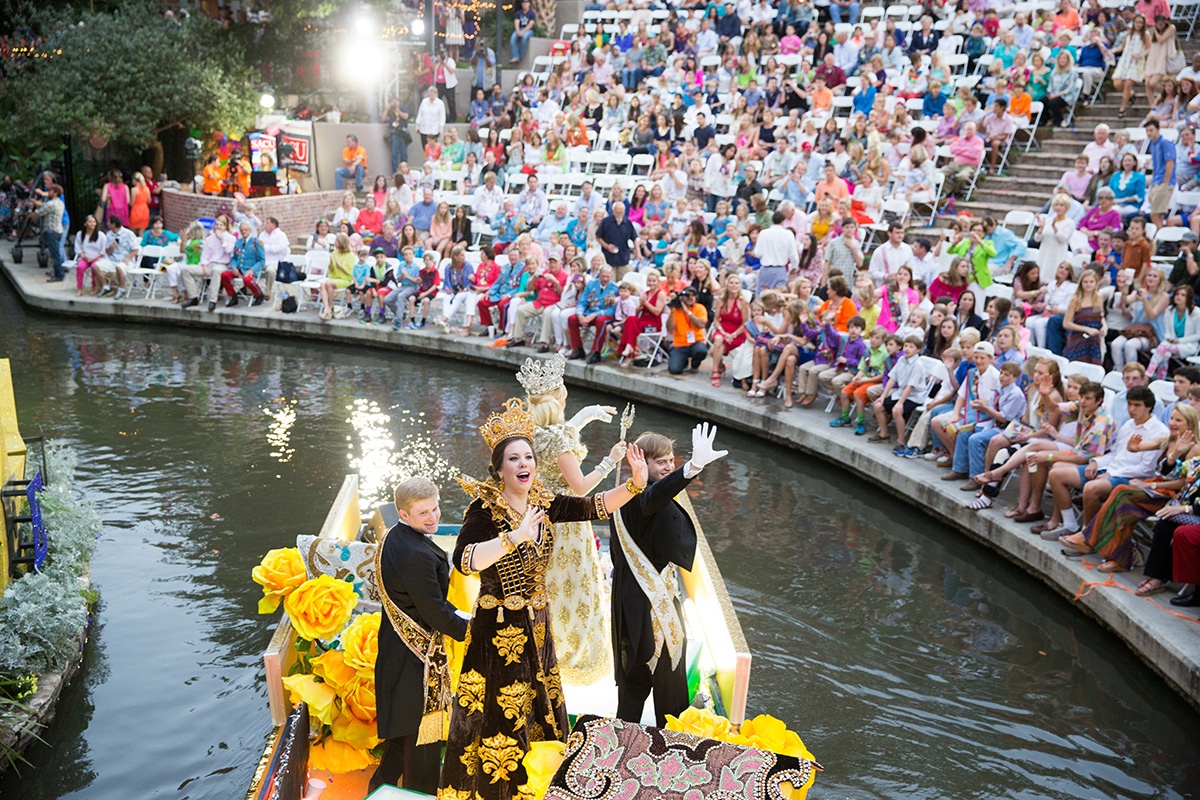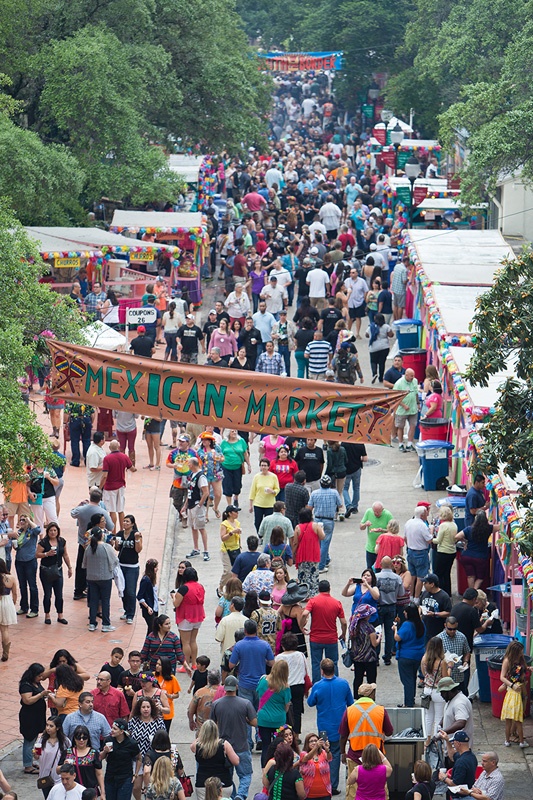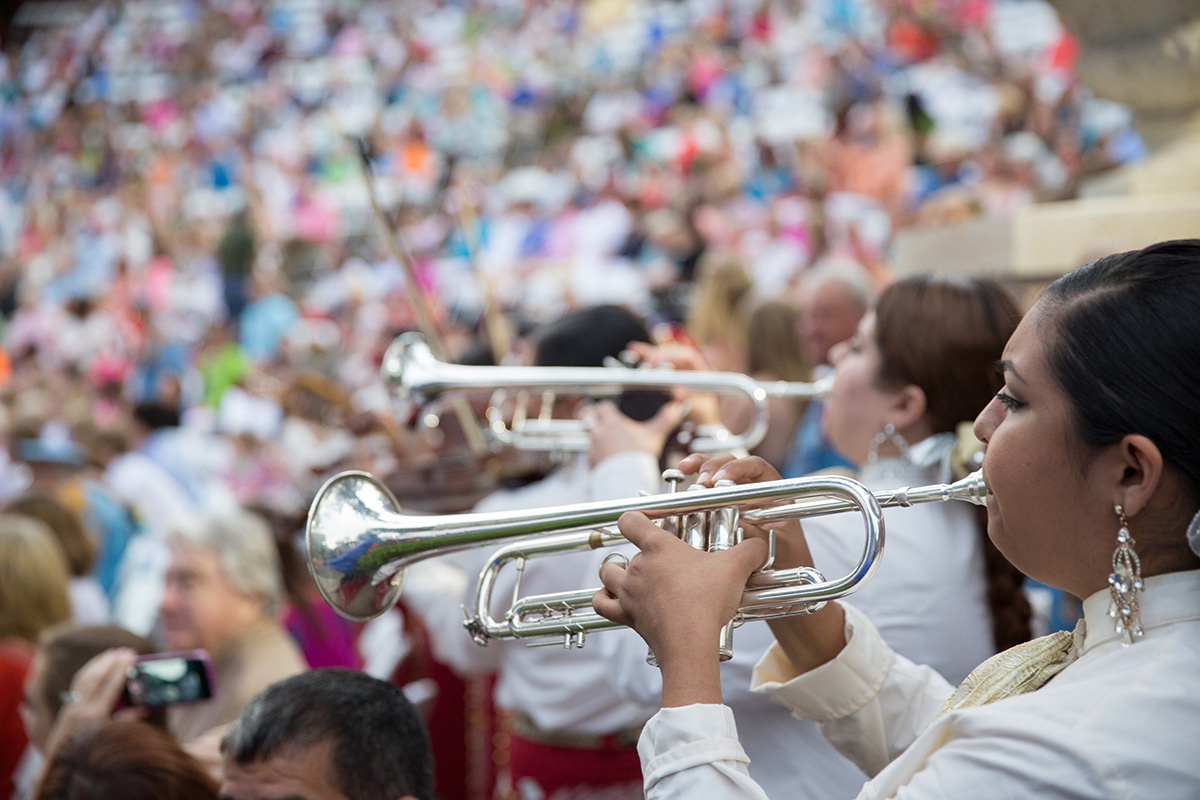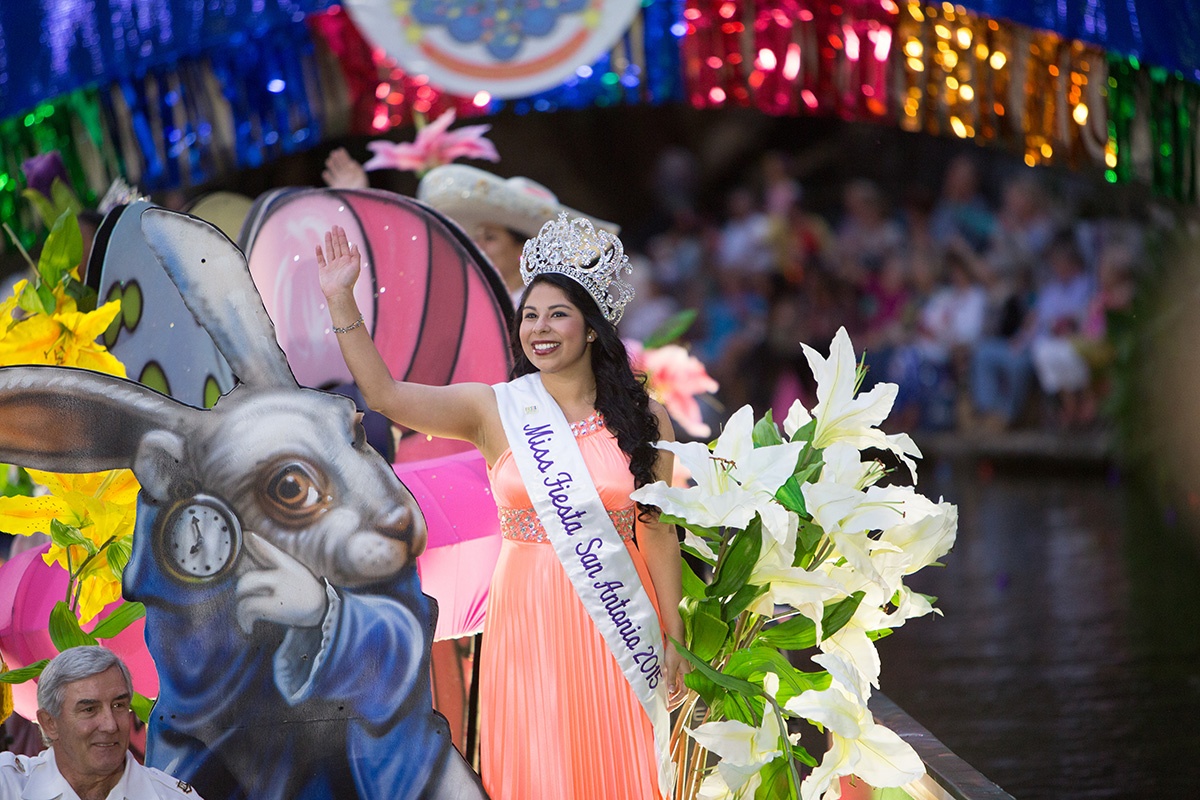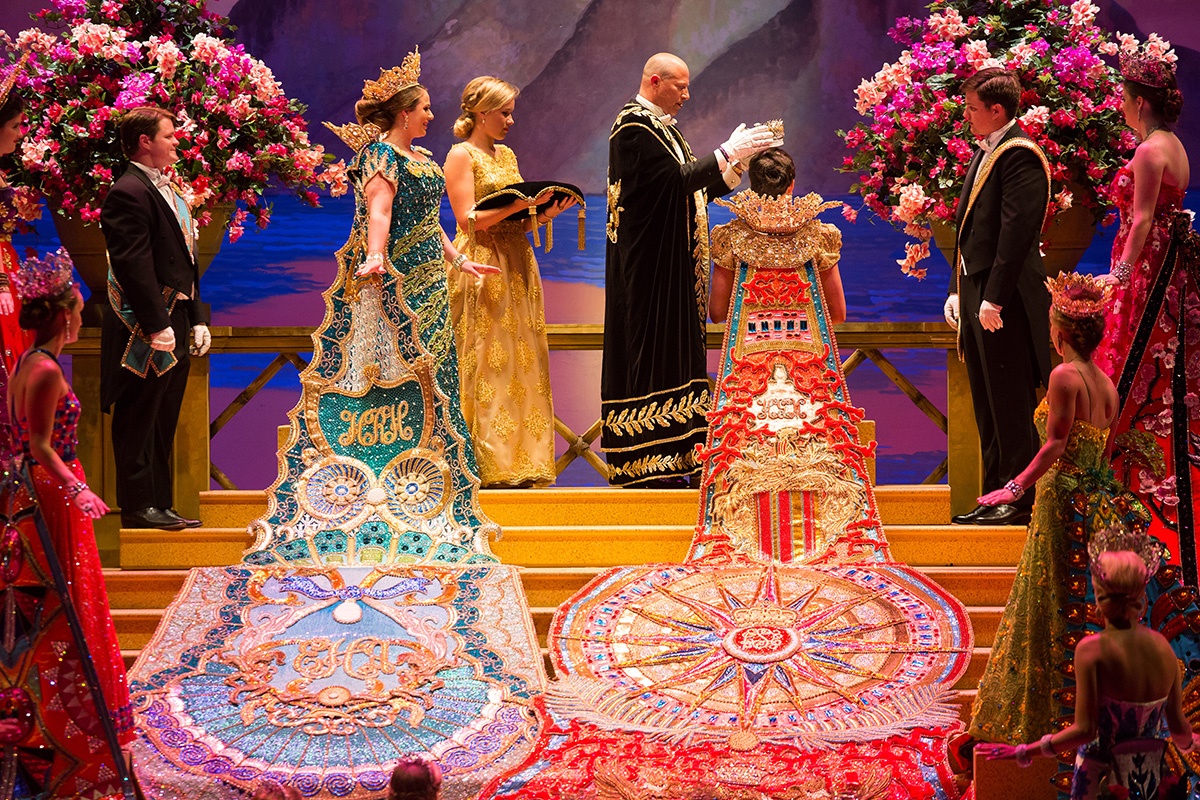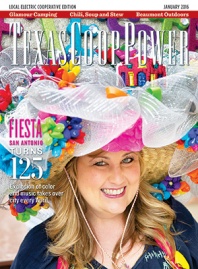San Antonio’s winding downtown streets and time-textured historic sites serve as a backdrop for an explosion of color and music that takes over the city for 10 days every April. Traffic patterns change, and all normal routines make way for the spectacle that is Fiesta.
Fiesta started in 1891 as a parade organized entirely by women to honor the heroes of the Texas Revolution and raise money to preserve historic sites. Two lines of horse-drawn wagons passed in front of the Alamo, the occupants pelting those in the opposing wagon with fresh flowers. From that initial “Battle of the Flowers” parade, Fiesta has grown steadily, now drawing 3.5 million participants who spend an estimated $284 million.
Former volunteer Anna Catalani notes that the Battle of the Flowers is “a celebration to honor the heroes of the Alamo. It’s not just an excuse for a party.”
Fiesta actually is one giant fund drive that still manages to feel like the celebration of the year. More than 100 local nonprofits, charities and military organizations sponsor the parades and events, raising money for philanthropic causes.
All across the city, organizations shut down streets, commandeer conference rooms, host theatrical presentations and transform urban spaces. More than 100 official events tout a cause and a culture.
Early in the week, I attend the Texas Cavaliers River Parade, which started in 1941 after the Works Projects Administration improved what is now the Riverwalk. I climb down the steps of the Arneson River Theatre and take a seat as the sun sets on a balmy spring evening. Hundreds of people have gathered here, with 250,000 more sitting along the shores of the Riverwalk for miles in each direction. Dozens of floats pass by on the San Antonio River below, with musicians performing and others waving and sending volleys of confetti and glitter onto shore.
The Cavaliers raise money for more than 50 children’s charities, with the 2015 total approaching $500,000. King Antonio, crowned each year from among the Cavaliers’ membership, presents the funds. The king appears to a standing ovation with the 2015 grand marshal, former Dallas Cowboys running back Emmitt Smith. Mariachis trumpet from the shore, and children dance in their seats as the floats continue down the river. Next come the Fiesta Queens in their sequined finery, then a bevy of Marilyn Monroe look-alikes who blow kisses to the audience. As the evening deepens, the floats become moving islands of illumination, noisy neon worlds on the still, black water.
A few nights later, I head to the city’s historic La Villita arts district for A Night in Old San Antonio. NIOSA started in 1948 and is run by 12,000 volunteers from the San Antonio Conservation Society. The society takes over the neighborhood, where 85,000 people stream through the gates over four nights. NIOSA is divided into sections, each honoring one of the cultures that helped establish the city of San Antonio.
The warm weather in the Mexican Market section enhances the aroma of tamales, fresh tortillas and fajitas that wafts through La Villita. Colorful cascarones, confetti-filled eggs, seem to be everywhere. A group of kids pools all their cash for two dozen, and as soon as the money changes hands, eggs fly, color bursting on heads and covering the ground. The kids run down the street, pummeling each other with cloudbursts of rainbow paper.
Patti Zaiontz is a four-decade veteran of NIOSA, originally drawn into the fold by the camaraderie and family atmosphere. She is careful to point out there are few paid vendors here: Volunteers run everything, from concessions to carnival games.
“It’s a big family reunion for the volunteers. You see people you haven’t seen all year and maybe won’t again for another year, but for that week you’re all together,” Zaiontz says.
I can feel that atmosphere walking among the booths. The people serving food and pouring beer for the crowds look as though they’re having just as much fun as the attendees. Many volunteers participate with their entire family.
“Volunteers come back year after year because you can see the tangible results of the efforts,” Zaiontz says. “The money we make selling tamales and gorditas translates into a worthy cause. You can walk through downtown or the Riverwalk and see places we have saved.”
The Conservation Society raises roughly $1.4 million for local projects, education programs, tours and scholarships during each year of Fiesta. The society was a key player in last year’s UNESCO World Heritage designation for the five San Antonio missions. The effort cost more than $1 million.
“The seed for that application was planted at one of our society meetings,” says Zaiontz. Five years of hiring grant writers, courting the U.S. Secretary of the Interior and working behind the scenes were funded by NIOSA to achieve the honor.
I turn the corner from the Mexican Market to Frontier Town and meet Sherri Kamp, who wears a towering Fiesta hat draped with sparkling tulle, colored flowers, rhinestones and multiple tiaras. She poses for a photo as she makes her way.
Down the street in Clown Alley, I find Jules Guest in a bright yellow outfit, draped in beads and medals, fanning herself dramatically. She dances for the stream of visitors passing the booth where she sells Frito pie. “You’ve gotta really sell it,” she tells me, invoking a vaudeville style of showmanship.
For 10 days a year, San Antonians vamp it up, and no one is shy about the attention. Other costumed festivals can feel voyeuristic and mysterious with people hiding behind masks, but people at Fiesta want to talk and make a connection.
The following evening, I don more formal attire and head to the Majestic Theater for the coronation of the Fiesta Queen by the Order of the Alamo. The coronation of the queen started in 1909 to raise money and celebrate each year’s debutantes.
Today the spectacle is as impressive as ever, with 24 duchesses, a princess and a queen, each wearing a bejeweled dress and train that might cost as much as $50,000 and weigh 50 to 100 pounds.
The evening’s emcee describes the history and artistry behind each woman’s gown. Each enters the long runway to the stage in shadow as assistants dole out her train, which can be 15 feet long. The duchesses, princess and queen each assume a regal pose as they are introduced. Then spotlights flood the gown, and it comes alive with sparkle and shimmer in a tour de force of opulence.
Linda Blount, “mistress of the robes” for the 2015 coronation, says, “I’ve never worked as hard on anything. And there is no dress rehearsal. I feel a huge responsibility to the audience, family and friends of the women. It’s like I have a new family with 26 new daughters.”
This black-tie event, one of the most heralded of the year, is also met with shrugs from those not impressed. Just down the street, another Fiesta tradition offers more sarcastic observers a place to celebrate their own causes.
In the 1950s, the director of the San Antonio Little Theater attended the coronation of the queen and found the whole thing hilarious. The following year, he started Cornyation as a way to poke fun at the upscale event. Originally a part of NIOSA, the event gained momentum and notoriety during the 1960s when outspoken groups from other parts of San Antonio found a voice. The event was shuttered in 1964 but revived in 1982 and now hosts its event on the same night as coronation.
The two major Fiesta royals, King Antonio and the Order of the Alamo Queen, have been joined over the years by seven other kings, queens, princesses and misses, representing various cultures and causes.
The Rey Feo line of royals was started in 1947 as a king elected by the people. Based on the Spanish tradition of appointing “the people’s king,” Rey Feo became an official part of Fiesta in 1980.
Fiesta is an inclusive festival for everyone, and the party seems bigger every year. “Fiesta unifies the whole city for 10 days. You see people from all walks of life come together and celebrate,” Blount says.
In fact, if you don’t like any of the more than 100 events, anyone at Fiesta would encourage you to find your cause, strike up your own line of royalty and join the parade.
——————–
Julia Robinson is an Austin photojournalist.
